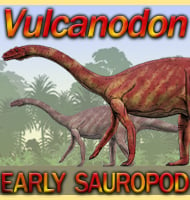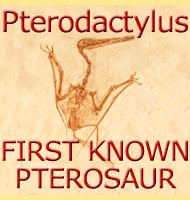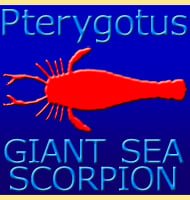In Depth
Further Reading
– Temporal variation in tooth fracture among Rancho La Brea dire wolves. – Journal of Vertebrate Paleontology 22 (2): 423. – W. J. Binder, E. N. Thompson & B. Van Valkenburgh – 2002. – Sexual dimorphism, social behavior, and intrasexual competition in large Pleistocene carnivorans. – Journal of Vertebrate Paleontology 22: 164 – B. Van Valkenburgh & T. Sacco – 2002. – Bite club: Comparative bite force in big biting mammals and the prediction of predatory behaviour in fossil taxa. – Proceedings of the Royal Society B: Biological Sciences 272 (1563): 619–25. – S. Wroe, C. McHenry & J. Thomason – 2005. – New body mass estimates for Canis dirus, the extinct Pleistocene dire wolf. Journal of Vertebrate Paleontology 26: 209. – W. Anyonge& C. Roman – 2006. – Craniofacial morphology and feeding behavior in Canis dirus, the extinct Pleistocene dire wolf. – Journal of Zoology 269 (3): 309–316. – W. Anyonge & A. Baker – 2006. – Carnivore-specific stable isotope variables and variation in the foraging ecology of modern and ancient wolf populations: case studies from Isle Royale, Minnesota, and La Brea – Canadian Journal of Zoology 85: 458-471 – K. Fox-Dobbs, J. K. Bump, R. O. Peterson, D. L. Fox & P. L. Koch – 2007. – Megafaunal Extinctions and the Disappearance of a Specialized Wolf Ecomorph – vol 17 issue 13, p1146-1150. – Jennifer A. Leonard, Carles Vila, Kena Fox-Dobbs, Paul L. Koch, Robert K. Wayne & Blair Van Valkenburgh – 2007. – Quaternary records of the dire wolf, Canis dirus, in North and South America. – Boreas 28 (3): 375–385. – R. G. Dunda – 2008. – Dire Wolf, Canis dirus (mammalia; Carnivora; Canidae), from the Late Pleistocene (Rancholabrean) of East-Central Sonora, Mexico. – The Southwest Naturalist 54 (1): 74–81. – John-Paul Hodnett, Jim I. Mead & A. baez – 2009. – Dire Wolf, Canis dirus (Mammalia; Carnivora; Canidae), from the Late Pleistocene (Rancholabrean) of East-Central Sonora, Mexico – The Southwestern Naturalist 54.1: 74–81. – John-Paul M. Hodnett, Jim I. Mead, A. Baez – 2009. – A comparison of tooth wear and breakage in Rancho La Brea sabertooth cats and dire wolves across time. – Journal of Vertebrate Paleontology 30 (1): 255–261. – Wendy J. Binder & Blaire Van Valkenburgh – 2010. – The carnivoran fauna of Rancho La Brea: Average or aberrant?. – Palaeogeography, Palaeoclimatology, Palaeoecology. 329-330: 118–123. – Brianna K. McHorse, John D. Orcutt & Edward B. Davis – 2012. – Cranial morphometrics of the dire wolf, Canis dirus, at Rancho La Brea: temporal variability and its links to nutrient stress and climate. – Palaeontologia Electronica. 17 (1): 1–24. – F.Robin O’Keefe, Wendy J. Binder, Stephen R. Frost, Rudyard W.Sadlier & Blaire Van Valkenburgh – 2014. – Dire wolves were the last of an ancient New World canid lineage. – Nature. 591 (7848): 87–91. – Perri et al – 2021.









